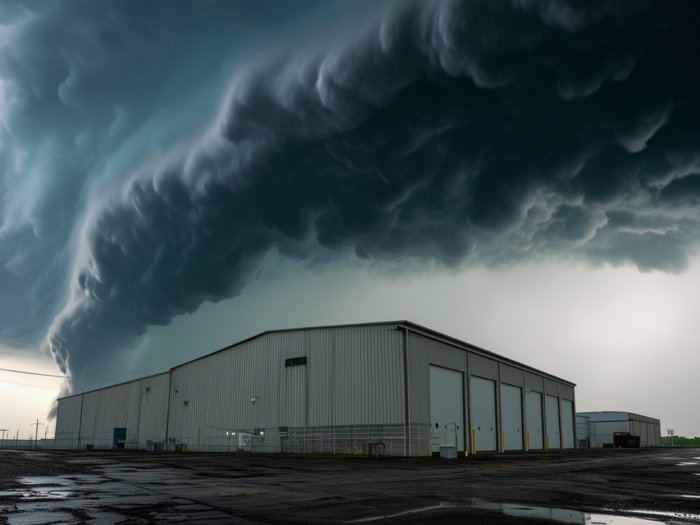Businesses Advised to Prepare for Exceptionally Active 2024 Hurricane Season

The 2024 Atlantic hurricane season is predicted to be exceptionally active, posing significant risks to businesses, according to a report by Allianz Commercial.
With forecasters expecting a range 15 to 28 tropical storms, 8 to 16 hurricanes, and 2 to 7 major hurricanes, which are storms with sustained winds of 111 miles per hour (mph) or higher, businesses are advised to take proactive steps to improve their storm resilience and protect their assets.
Early forecasts from experts at AccuWeather, Colorado State University (CSU), National Oceanic and Atmospheric Administration (NOAA), North Carolina State University (NCSU), Tropical Storm Risk (TSR), and the UK Met Office all point towards an exceptionally active 2024 Atlantic hurricane season.
NOAA last month issued its highest-ever pre-season forecast, predicting that between 17 and 25 named storms will form (the average is 14), and 8 to 13 will become hurricanes with winds of at least 74 mph (the average is 7). Out of those 8 to 13, 4 to 7 could become major, with winds of at least 115 mph (the average is 3).
NOAA’s outlook is in line with CSU’s preseason forecast, which in April issued its busiest outlook: CSU called for 23 named storms, 11 hurricanes and 5 major hurricanes.
Unusually warm sea surface temperatures (SSTs) in the tropical Atlantic, coupled with La Niña conditions expected to develop this summer, are creating prime favorable conditions for the development of tropical cyclones in the Atlantic, Allianz Commercial noted. As of mid-May 2024, the SSTs in the North Atlantic are as high as the average SSTs (1982-2011) by mid-June, with most Atlantic SSTs registering significantly warmer than in the last 44 years.
These warmer-than-usual SSTs not only affect the probability of hurricane formation but could also influence landfall risk, the report cautions. During years with warm SSTs, the U.S. Gulf Coast tends to see an increase in the risk of tropical storm landfalls, while the Southeast Coast of the U.S. sees an increased risk of hurricane landfalls.
Despite the high confidence in a very active 2024 Atlantic hurricane season, uncertainties remain around factors like the El Niño Southern Oscillation (ENSO) and outbreaks of dry, dusty Saharan air, among other factors. However, the combination of warm SSTs and expected La Niña conditions during the peak of the season (August to October) suggests that businesses and residents along the Atlantic Coast should prepare for an above-average number of tropical cyclones this year, according to Allianz Commercial.
Lessons from the 2023 Atlantic Hurricane Season
The 2023 Atlantic hurricane season proved to be more active than expected, with a total of 20 named storms, 7 hurricanes, and 3 major hurricanes. Despite the above-average activity, only 8 storms made landfall in 2023, with most being classified as “fish storms” that remained out at sea without posing a direct threat to land.
The accuracy of pre-season forecasts varied significantly in 2023, with predictions ranging from as low as 5 hurricanes to as high as 11.
“It all came down to a battle between two weather giants: warm ocean temperatures, perfect for brewing storms, were at odds with El Niño, a climate pattern that usually reduces hurricane activity,” Mabé Villar Vega, catastrophe risk research analyst at Allianz Commercial, said of the 2023 discrepancies.
With the 2024 hurricane season underway, Villar Vega emphasized the importance of businesses revisiting their risk management strategies and strengthening resilience measures.
“Regardless of the overall activity level predicted for 2024, coastal businesses and residents should remember: it only takes one landfalling hurricane to significantly disrupt lives and property,” she stated.
Five Steps to Boost Storm Resilience
The lessons from the 2023 Atlantic hurricane season serve as a reminder that businesses must remain vigilant and prepared, even in the face of uncertain forecasts. Allianz Commercial advises that for improving resilience to withstand and recover from an extreme weather event, businesses should adopt the following recommendations:
- Update and Test Emergency Preparedness Plans: Preparation before the storm minimizes property damage and reduces business interruption. Ensure your business has a comprehensive written emergency response plan for extreme weather events, including high winds and flood.
- Test and Update Business Continuity Plans: The crucial role of business contingency plans has become more apparent as a result of recent natural catastrophes. If a storm is expected to hit on a weekend or a Monday, it can make it difficult for employees to develop and implement business contingency plans while preparing their homes and families for the storm.
- Understand Your Insurance Policy: Business owners should take the time to read their current policy and discuss with their brokers what is covered and where there may be gaps. Determine if the limits of liability are in line with the current dollar value of the cost to repair or replace the damage. Consider adding an extended period of indemnity clause to the business interruption coverage to support the business until it returns to its pre-loss financial condition.
- Know What to Prepare For: Planning for a wind event involves different preparation than planning for flooding. In the case of an event such as Superstorm Sandy, which occurred in 2012, most preparation was based on a high wind event, leaving many businesses unprepared for the flooding caused by the storm surge.
- Consider Hardening Your Property: The following enhancements could help businesses withstand the high winds and flooding that can accompany a windstorm, per Allianz Commercial:
- Emergency generators for loss of power.
- Floodgates and flood doors.
- Raising critical equipment above highest anticipated flood levels.
- Protecting the building ‘envelope’ from high winds. This could include measures such as using impact-resistant doors and glass, or providing additional securement of the roof covering system to the roof deck.
To view the full report, visit the Allianz Commercial website. &










